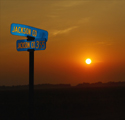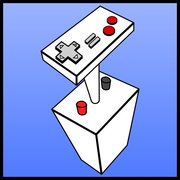|
CNCzone.com has all sorts of information on this. I'm drooling over a couple of the very large CNC routers that are listed on there.
|
|
|
|

|
| # ? May 14, 2024 06:46 |
|
Cobalt60 posted:I was just reading a bunch about this, but in a forum for guitar builders. Funny you should say this, I am looking into it because I am getting into luthiery.
|
|
|
|
Demolisher posted:Funny you should say this, I am looking into it because I am getting into luthiery. It seems like a bit of a novelty for luthiers, to me, honestly. I mean, it's only really useful for neck carving. So unless you plan to build HUNDREDS of guitars, you can just carve it yourself with a spokeshave like everyone else and save the CNC project cost and Or, frankly, just buy a pre-CNC'd neck from someone, since they can get pretty cheap these days. I dunno, not trying to deflate your enthusiasm, it's just always seemed like "too much tool" for small-production luthiers (e.g. under 20 guitars a year, maybe).
|
|
|
|
http://www.cnczone.com/forums/showthread.php?t=38220 Build that one, pay for the plans, the guy has done tons of research and it is proven. If I ever get some money, it is what I will be building. GEMorris fucked around with this message at 02:03 on Apr 28, 2009 |
|
|
|
optikalus posted:Home Depot won't ever do 'precise' cuts. You're going to lose 1/8" no matter what, as that's the width of the blade itself. If you have a circular saw, it's easy to make precise cuts. You just need a backing board clamped to the board you want to cut. This will keep the blade straight for you. I also usually replace the blade in the saw with one with a higher tooth count. This will reduce the board's want to splinter. not to mention the 4x8 sheets are really 4ft 1/2in. I told them to cut it in half expecting 2ft 1/4in, nope I got a 2ft piece and a 2ft 1/2in piece. gently caress having them cut it, get yourself a chalk line and do it yourself.
|
|
|
Cobalt60 posted:Just a "broad" question, if I were to build up a fairly small shop of power tools. If I was looking for the following items, by priority, is it possible to be "brand loyal," meaning could I basically find a good brand a stick to it for ALL these items, without being stupid or losing out somehow? Agreeing with what others have said in that you're better off picking and choosing. However I can recommend Makita for decent quality stuff. As a bit of background I work in joinery (now designing rather than manufacturing), but we have a large workshop with 15 or so guys and all of our power tools see heavy, constant use. Makita's 1/2" routers are very good, as are their hand-held belt sanders and mitre/chop saws. I think they also do a half decent drill press, but their drill/drivers are a bit unreliable, although this is talking in terms of heavy workshop use. 2 colleagues of mine had (I think 18 volt?) makita drills which both died after about a year and a half, whereas I've got a 15.6volt panasonic which has been going 5 and a half years now with no problems. I've never used their RO sanders (if they even make them?), only the Festool ones, which are very good, but probably overpriced. As for table saws, jointers, thicknessers(surface planers) I'd stay away from the brands which do handheld tools and go with one that mainly do machinery like this. IME the ones that make good handheld tools never seem to make good machines. We have a Festool multi-machine (planer, thicknesser, table router, tilting table saw) and there are elements of it which just don't work properly. I'd stay away from DeWalt, they make passable stuff but compared to a lot of other brands their stuff falls short.
|
|
|
|
|
Demolisher posted:Funny you should say this, I am looking into it because I am getting into luthiery. There's also http://luthierforum.com/ which seems to have some sort of weird rivalry with that other one IIRC. Also it's a little hard to navigate, but they do have a bit of information for all levels of builders if you dig around. Also they have William Cumpiano who's book I reccomend if you're starting out. I got about halfway done with one before a breakup caused me to have to pack up the workshop, and that book demystified and explained a lot of stuff you'd never think of or get exposed to doing basic cabinetry or home improvement type stuff. edit: adblock plus seems to help quite a bit with all the extraneous images btw. The front page of the forum is pretty much an extended advertisement for the siteowner's spruce business, but don't let that discourage you from digging around though. mcrandello fucked around with this message at 22:08 on Apr 28, 2009 |
|
|
|
I've decided that in the climate I can't really afford to buy power tools of a quality that I would want, so I'm going to try the hand tool route. After reading the Collins Woodworking Encyclopaedia, I've come up with the following that I should look into getting 'decent' versions of a few of these (please forgive me for not using the correct names, the book is at home and I'm at work): * Set of chisels (1/4" up to 1") * Ripsaw * Backsaw * Jack plane I've already got, or will require some of these ancilliarys: * Whetstone * Mitre Box * The measuring stick with to transfer/scribe marks (oh god retard) Is that about right?
|
|
|
|
Speaking of guitar making, I have a few pics of my first guitar in progress :3 90% of people i show this to are shocked that there's stuff inside a guitar body  glueing the back on, those clamps are about $13 each, and I need to buy over forty of them at some point, god knows how I'm going to afford that  where I'm at now, hand chiselling a channel around the edges and inlaying some binding. 
|
|
|
|
^^That is spectacular. You should definitely post more pics of the process as well as the finished product. Did you get a kit from Martin or some place, or is this from scratch? Edit: One more question, is the back all one piece? Jagtpanther posted:I've decided that in the climate I can't really afford to buy power tools of a quality that I would want, so I'm going to try the hand tool route. If you're going to be using hand planes, you'll probably want at least 3 of varying sizes, including a block plane. Quality planes, like a Lie-Nielsen or a Lee Valley, are going to get pretty spendy, just to forewarn. You may be able to find some old Stanley's at garage sales that, with a little TLC, can also be very good planes. If you're going to be working exclusively with planes and chisels, you'll need to learn how to properly tune them as well as get a solid sharpening system going, otherwise even the best planes will shortly be useless. As far as sharpening, the cheapest option may be a slab of granite and wet sandpaper. I got the granite slab at Woodcraft. Then you have your water/oil/diamond stones of varying grits. I would recommend you start with the less expensive option first in case for whatever reason you just don't end up liking it or what have you. PMan_ fucked around with this message at 15:41 on Apr 29, 2009 |
|
|
|
GEMorris posted:http://www.cnczone.com/forums/showthread.php?t=38220 I'm actually building a Joe's Hybrid 4x4 right now. I'm thinking about making a thread about my build, and maybe CNC stuff in general. I HIGHLY recommend spending a bunch of time talking to people in their forums if you buy the plans, there's a lot of modifications that people making that aren't on the plans yet.
|
|
|
|
Nothing special to show, but it's my first attempt at building anything other than a birdhouse. Sorry for the cellphone photos... Ultimately I was going for an entertainment unit to hold either my stereo equipment and LPs OR my gaming consoles and a plasma screen TV (that's waaay down the road). The possible plasma TV is why it's so long. Either way, it was a 2-day project that I'm happy with. It's not as Homer Simpson-looking as I had anticipated, and can hold some considerable weight. Dimensions are 4' x 1' x 2'   I had another 4' 2x4 for possible bracing (top shelf maybe) but it's twisted and slightly curved... did the best I could, but I'm thinking I'll attach it between the legs under a shelf to provide weight support rather than having it behind the legs on the outside as a means to stabilize it. Either way, here's what I was doing to it before I realized how stupid I was...   I dunno if I'll stain it or paint it... it's fine as it is IMO, though that's probably cos it's my first project and don't care. Backweb fucked around with this message at 20:21 on Apr 29, 2009 |
|
|
|
PMan_ posted:If you're going to be working exclusively with planes and chisels, you'll need to learn how to properly tune them as well as get a solid sharpening system going, otherwise even the best planes will shortly be useless. Could you point me in the right direction for where to find this out? My Collins book has side-columns of two or three part illustrations showing tasks like sharpening things - but would like to get a second opinion. I feel like a doofus, but why would I need granite, wet/dry AND stones? is that the progression from a totally fubar'ed chisel to a good one? What's the consensus on the japanese tools? They feature pretty prominently in The Book, but I don't know if that's because they're novelties or noteworthy.
|
|
|
|
Jagtpanther posted:Could you point me in the right direction for where to find this out? My Collins book has side-columns of two or three part illustrations showing tasks like sharpening things - but would like to get a second opinion. Oh, you don't need ALL of those. The granite/wet sand paper should do you just fine. I'm just saying that depending on your budget you can also look at the various kinds of stones. The progression for all of them is going from a low grit to a high grit, typically "polishing" until you can see a passable reflection of yourself in the blade. You'll probably also want to get a honing guide for that, but those are around $15. As far as other books to check into, The Handplane Book by Garrett Hack is pretty great for learning about planes, how to tune them, how to sharpen them, and how to use them. The Complete Guide to Sharpening by Leonard Lee is also something you'll want to check out.
|
|
|
|
Amazon wishlist here I come. Oh, speaking of which - everything I've read pretty much everywhere says to use a jointer/planer to prepare sawn timber. Is it a case of going at it with a fore plane and hoping, or is there a particular special technique for getting timber nice and square by hand?
|
|
|
|
Check your local library, too. Mine actually has a surprising array of woodworking books, including the two that I just mentioned. As far as milling with hand tools, look into shooting boards.
|
|
|
|
Shop= finished. (Yeah right.) Tornadoes can suck my dick, I dare another one to come my way.       
|
|
|
|
Good god, that's beautiful man.
|
|
|
|
PMan_ posted:If you're going to be using hand planes, you'll probably want at least 3 of varying sizes, including a block plane. Quality planes, like a Lie-Nielsen or a Lee Valley, are going to get pretty spendy, just to forewarn. You may be able to find some old Stanley's at garage sales that, with a little TLC, can also be very good planes. This is all good advice, my version is only slightly different. If you are going to spend "new tool money" on any plane, it should be a low-angle jack. I recommend Veritas, but Lie Nielsen is also nice (but more expensive). I also recommend getting an extra blade for that plane. Then get a used low-angle block plane, and a hock blade. Keep the hock blade sharpened at the regular angle, and sharpen the stock blade to a higher angle. The result here (with both planes) is that you can have a regular/low and a high angle plane just by swapping blades. I have a miller falls here, a 57 or 56 will work. Stanley also made a ton of these but the model numbers escape me. The next tool would be a router plane, the Stanley 71 1/2 is relatively unloved simple router plane that goes for cheap on ebay. This plane can do tons of jobs that more specialty planes do faster, but for far more money. Grooving, dados, etc, can all be done with a router plane. With these three planes you can do almost ANYTHING. Tasks that these planes cant do well (trimming tennon cheeks etc.) can be done with specialty expensive planes, or simple things like Nicholson Mill Tooth File (http://cgi.ebay.com/Nicholson-12-in...1QQcmdZViewItem) for a whole lot less money. After getting those three tools, I'd concentrate on saws. Panel and Rip saws (backless) aren't hard to find for decent money, backsaws can be tougher depending on what part of the country you are in. For new, I wholeheartedly recommend the Veritas dovetail saw. Chisels are an area that people often overspend on, or buy too many. The affordable Narex chisels are consistently rated well. Get a 1/4" a 3/8" a 1/2" and a 3/4", http://www.leevalley.com/wood/page.aspx?c=1&p=49989&cat=1,41504,43500&ap=1. As far as mortise chisels go, this is where I would spend big bucks and get a 1/4" Ray Isles mortising chisel. As far as sharpening, do some searches about sharpening with diamond paste, it really works and it is cheaper than many other options by a longshot. While really nice sharpening guides are nice, a side clamp jig for $20 or less will get you far. http://cgi.ebay.com/12-pcs-5gram-Di...1QQcmdZViewItem
|
|
|
|
Jagtpanther posted:Amazon wishlist here I come. Going at it with a fore plane and then a jointer plane does work, and isn't nearly as hard as you would think.
|
|
|
|
Jagtpanther posted:I've decided that in the climate I can't really afford to buy power tools of a quality that I would want, so I'm going to try the hand tool route. I actually prefer bow saws to backsaws and you can build a helluva nice bow saw for very little. You can make a poor man's bow saw from a hacksaw and bandsaw blade but the blades tend to twist and break often. I wouldn't spend much on a scrub plane, just buy a Stanley and regrind the blade with a curve. They're only for rough work anyway. I flattened a Mahogany tabletop with a Stanley Baily Jack Plane, resharpened then smoothed the top with the same plane. I did do a little work tuning the plane and flattening the sole first though. There are plenty of ways to sharpen, I use the Scary Sharp method (sandpaper), you can google it. My planes and chisels are sharper than my razor. The Marples blue handle chisels are very good for the price. You can buy a set of four for around $30. And unless you really want the exercise I would recommend a good circular saw instead of a rip saw. They'll cost about the same anyway.
|
|
|
|
ChaoticSeven posted:Shop= finished. (Yeah right.) Tornadoes can suck my dick, I dare another one to come my way. Nice man. What's the tool between / next to the bandsaw and dust collector
|
|
|
|
sky shark posted:Nice man. What's the tool between / next to the bandsaw and dust collector You looking at either the planer or jointer.
|
|
|
|
God, just been reading the 'Hand Tool Essentials' by Popular Woodworking and my god - three sets of stones, a diamond plate, and a honing guide is going to set me back $200! Going to be scouring the flea-market/bootfairs as soon as I get a chance for this allegedly venerable Stanley No. 11 - I think for my first rough bits it'll do.
|
|
|
|
Jagtpanther posted:God, just been reading the 'Hand Tool Essentials' by Popular Woodworking and my god - three sets of stones, a diamond plate, and a honing guide is going to set me back $200! Save your money for tools, buy a glass plate and $20 worth of sandpaper from an auto parts store.
|
|
|
|
anaemic posted:glueing the back on, those clamps are about $13 each, and I need to buy over forty of them at some point, god knows how I'm going to afford that Those clamps look relatively simple, why don't you just make them? The first one might take a while to set up, but after that, I think I could turn quite a few out in $13 worth of time. Then you can customize it however you want, and make as many as you want.
|
|
|
|
Yeah I think I'm going to have to try and come up with a plan to make my own, luckily for me I might have the opportunity to have them part made on a CNC router, although the design is too complex for it all to be done automatically, at least within the limitations of the machine ill be using. As for sharpening with sandpaper I've always been very sceptical, sandpaper is inherently not flat. I've had it drummed into my head time and time again by different teachers that it shouldn't be used for removing material even when against a flat block because of this, and that I should only be using abrasives for finishing and polishing work. Besides that, I picked up combination 250/1000 and 1000/6000 waterstones from axminster here in the UK for £30, and they'll long outlive the same amount of sandpaper. Using a honing guide isn't the greatest plan for a number of reasons, they're not good practice for learning to sharpen well, and especially on waterstones they'll damage the surface, and cause too much wear in specific areas as they restrict your ability to sharpen in the corners of the stone or at angles across it. Truing your stone doesn't involve expensive tools either, if you have two stones you can flatten them off each other, or with a piece of glass, let the stones own swarf cut it back.
|
|
|
|
anaemic, thanks for that - I'll definately look into those stones from Axminster. With regards to the honing guide - I'd never heard of it until reading this book, but the guy says despite the nay-saying it's a good tool to get a primary and secondary bevel without much effort?
|
|
|
|
anaemic posted:Yeah I think I'm going to have to try and come up with a plan to make my own, luckily for me I might have the opportunity to have them part made on a CNC router, although the design is too complex for it all to be done automatically, at least within the limitations of the machine ill be using. I've considered it too, not sure if this link from my research help: http://www.kennethmichaelguitars.com/camclamps.html
|
|
|
|
Idiot question, while I'm watching Mr. Bubinga do his work. With hand tools, how do you get a perfectly square end on a piece of dimensional lumber? I mean, I know the mechanics of a curved plane blade, but I can't figure out how you'd go about doing it while keeping the piece at the exact required length. Crosscut it perfectly the first time?
|
|
|
|
Jagtpanther posted:Idiot question, while I'm watching Mr. Bubinga do his work. With hand tools, how do you get a perfectly square end on a piece of dimensional lumber? I mean, I know the mechanics of a curved plane blade, but I can't figure out how you'd go about doing it while keeping the piece at the exact required length. Crosscut it perfectly the first time? Shooting board. Some people keep a separate non-curved blade for shooting, but most say it is pointless since the diameter of the curve on a plane blade is very large.
|
|
|
|
That's an amazing amount of clamps. I was planning on simply slicing up an old innertube and wrapping it around when the time came. Either that or the old threaded rod, nuts/washers and wood donuts clamps. For whoever asked about it above, the back, as well as top on acoustic guitars is bookmatched so you have a nice mirror grain pattern running down. Also why you have that strip running down the middle on the back. The bracing and the bridge plates is usually enough to keep the top stable, as they're made from spruce which has an amazing amount strength when quartersawn. I can second the scary sharp method on chisels/planes. I basically used a piece of tempered glass on top of the table saw, with the sandpaper glued down at its ends and a honing guide. There's nothing quite like shaving a patch of hair off your arms with a plane blade. If anyone has the secret to raising a burr on a cabinet scraper though, I'm all ears. I've tried numerous methods and can't seem to get it to produce anything more than powder and hand cramps when I use it. I might try the drill press method next: http://www.youtube.com/watch?v=7McwpmFZ6Us despite the source.
|
|
|
|
What technique uses a plane with a curved blade on end grain? I've always used a block plane.
|
|
|
|
wormil posted:What technique uses a plane with a curved blade on end grain? I've always used a block plane. By curved I don't mean scrub plane or even fore plane level of curve, I'm talking about the amount of curve you put on a smoothing or jointer plane so that you don't leave "tracks" when you plane. Some people think that shooting with these blades, with their extremely small amounts of curve is not acceptable, and keep a straight sharpened blade for shooting. I say the amount of curve is completely imperceptible over the small distance that is the thickness of a board and don't bother. I shoot with a jack plane, some shoot with a smoother plane. I can't shoot with a block plane, maybe my form is all wrong but it is just too jumpy for me. The jack plane lets you get some momentum up to power through the cut, the block can get hung up on a tough patch. Just my experience, if blocks work for you with shooting then keep at it.
|
|
|
|
Gotcha. When I plane end grain I take very fine cuts, producing basically dust. Requires a sharp blade though. It's not something that comes up often though.
|
|
|
|
So I was doing some pricing and it would cost just about the same if not a little less in materials to simply construct a new top instead of re-veneering the existing surface. Like I said, antique value isn't an issue, the main thing is I want a surface that will last a long time and stand up to a bit of abuse. Labor-wise, am I not wrong in assuming that it would be a lot less work to layer two pieces of high-grade board together than to go through the whole veneer process? The only reason it won't be considerably cheaper is that I'd need to get two whole sheets (unless someone sells 4x6 sheets for an equivalently lower cost) since the surface is 3' by 5' and I obviously can't get two pieces of that size out of a 4x8 sheet. I'd need leftovers anyway for the leaves. For the surface itself, I'd like to get that "encased" bar-top type finish on it, is that just basically layering tons of polyurethane on it or is there something else to it? Also, I'm considering (probably not at the same time) stripping down the rest of the surfaces (sides, drawer fronts, etc.) and re-finishing from the wood up. Since I'm going to be using new wood on the top, should I just try to get a close stain match or go for something more exacting on the top? Would I be best off doing the entire desk at once if I'm going to do this?
|
|
|
|
Show and tell! Went to the bootfair today and spent some money - £25/$35 in total and picked up quite a bit.  The marking gauge still has a point, there's only surface rust on a few bits  I missed out on a Stanley #4, but found this baby. I'm encouraged by the fact the same model is in the Popular Woodworking hand tool book, and the handle is worn black.  I also picked up some wooden planes. I've heard these are harder to use than metal planes, but at £1 each I'd feel very silly for not trying. 22", 18" and 6"  This is what the plane blades look like. The lowest one is off that honking big wooden plane and looks to be in the best shape.  Sheffield cast steel? This was off of the smallest wooden plane.  There's no mouth on the largest plane, as you can see. So, Questions!
Cheers,
|
|
|
|
Roflex posted:It's hard to give advice not having seen the piece. But yeah, it might be easier to just create a new top. Bar tops are covered in epoxy. Just google "bar top epoxy". Jagtpanther posted:Cheers, re: odor - using them will get rid of the odor or you can clean them, just don't use anything like Pledge with silicone oil in it. Depending upon your sharpening method just flatten the back of the blade then regrind the edge, sharpen & hone them. edit: also flatten the plane sole. wormil fucked around with this message at 19:11 on May 3, 2009 |
|
|
|
Jagtpanther posted:words Your 18" wooden plane is a fore plane, or even jack plane as wood planes tend to run larger than their metal counterparts. flatten the back of the blade, put a relatively serious curvature on the blade, and fugghedaboudit. It's for planning cross-grain to get rough lumber ready for the jointer plane.... Which is the 22" plane. Flatten the sole, this is easiest, ironically, on a powered jointer. Second easiest is with a second jointer plane that is known to be flat. It can be done other ways, but I would try to find a way to make one of those work. Check it first, it could already be flat. Take a straightedge to the bed (the surface the blade sits on) of that plane, it probably has warped and is why you have tons of room behind the blade and none in front. If it has warped you'll need a float (mill tooth file) or a relatively rough file to flatten it again. The record plane will probably be just fine. As long as the blades don't have pitting on the BACKS, then they are fine. I can't believe that those planes were 1 pound each. Nice brace.
|
|
|
|

|
| # ? May 14, 2024 06:46 |
|
Great guys - thank you both!  I've checked it out and all of the planes have flat soles (according to a straight edge, a spirit level and the back edge of a ripsaw). It turns out the reason there was no gap in the mouth of the largest plane was that I put the bloody blade in upside down. I gave it a quick whirl and despite being set too deep it sliced off a nice slither. I've checked the blade backs as suggested, and apart from a 1/16 nick about 3/4" up from the bevel on the Record blade they're all fine. There is a little surface rust up on the unsmoothed/flattened part of the blade, is it something I should/can clean off? Is there any particular kind of cleaning/oiling/etc. I need to do? I would've thought not but the little rusty patches on a couple of them would indicate otherwise... GEMorris, so that big bastard and the metal plane will be my tools of choice for regular planing jobs, right? If I had rough-sawn timber I'd use the middle wooden fore plane to get it relatively smooth enough for the jointer plane to actually do the business? Or is there an intermediate step between getting rough sawn wood off the truck and the first fore plane run-through? I guess there's nought left to do but buy some stones/sandpaper/whatever and get the blades sorted, and some chisels to round out my set. Then I've got no excuse but to start making things.
|
|
|



















